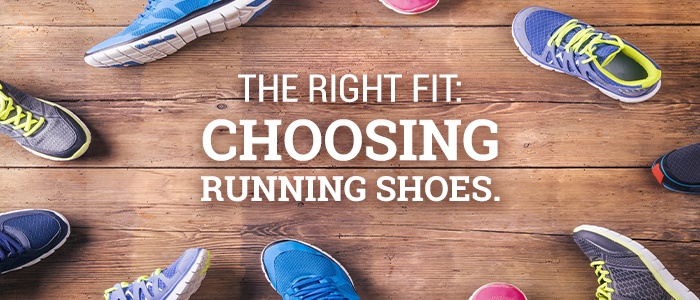
With the warm weather coming soon, the sidewalks and pathways will be packed with runners. But before you head to your next run, it’s important to make sure you have the right shoes.
Check out our tips on how to choose the right shoes to support your feet while running.
What’s the difference?
Sure, picking out your everyday shoes might be more about the look than the function. And depending on how much you value comfort, that might outrank style for you. But when it comes to running shoes, there’s a big difference. Most importantly, pick shoes that offer enough space to accommodate the width of your foot. Think about how your mom tested your shoes out when you were school shopping – account for one thumb-width between the end of the longest toe and the end of the shoe. (And women should consider squared or rounded toes, rather than pointed ones.)
What arch is best?
First, you must determine what type of foot, or more specifically what type of arch you have: low, medium, or high. You should always measure your arch height when you’re standing to avoid an inaccurate measurement. Arch height will determine the shape of the shoe needed, also known as the “last”. The last of the shoe is the amount of curve on the bottom of the shoe. Shoes are built on a straight, semi-curved, or curved last. Identifying your foot type can also help you figure out how much cushioning or support you will need.
Don’t skimp on analyzing the arch of your foot when it comes to picking out running shoes. Even the way you run has an affect on which type of shoe to select. Inspect the shoe you’ve been running in for the following:
- Wear primarily around the ball of the foot and secondarily the heel is often indicative of a flat-arched foot. This is usually a more mobile foot, also referred to as a pronated foot. This foot has the potential to allow too much motion and needs a more supportive shoe that offers better motion control and stability.
- Wear primarily along the outer edge of the shoot usually hints at a high-arched foot. This is usually a more rigid, stable foot, also called a supinated foot. This type of foot needs more cushioning inherent in the shoe to provide for better absorption of shock to prevent injuries to the feet and legs.
If all else fails and your wear pattern isn’t speaking to you, another way to tell is by having a running analysis done by a trained professional. (And the pros at Orthopedic Institute can certainly help you identify your desirable arch as well.)
What about the price?
That price tag can be a little scary – but the saying is true: “You get what you pay for.” Buying the cheapest running shoes you can find will likely mean you’ll need to replace them sooner or you’ll suffer the consequences from the poor support. Investing a little more traditionally ensures you’re getting the best quality materials and construction. Don’t worry – you won’t have to drop $200 on a pair of shoes. Good athletic trainers (running shoes) run anywhere from $80-150.

